|
|
|
GALLERY CONTINUED
PAGE THIRTY-THREE
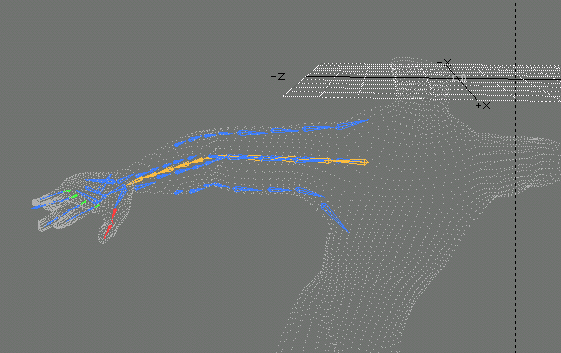
I was surprised to learn I had not OMITTED this page. Its information is THAT USELESS.
This experiment was undertaken because there was a feature in LIGHTWAVE 6.5 that would convert all edges to "skelegons" which would then be converted to bones later. Having very little success with bones using INSPIRE, I inferred that this would be a wortwhie approach.
Since then, I've learned that the two things I did: putting bones all along the object surface, and "resting" them once they were in position -- were completely avoidable.
Sadly, at the time, I really thought I had something. I have heard of others developing similar solutions and problems though.
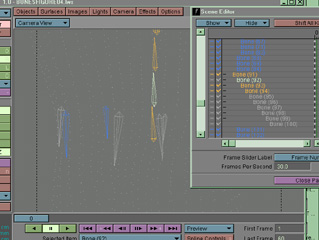
It is worthwhile to know that object wireframes, bones, Nulls, Lights and camera can be colored by toggling the first box from the left in the Scene Editor table. This feature also comes up as a way for large teams of animators to delegate assignments -- Larry does the Blue items, Ralph handles yellow,...
There is something to be said for having multiple bones, as with redundant bones, where a bone will have two or three duplicates: a parent for providing a "generic" adjustment when the skeleton has its object replaced, a child bone for retracing the positiom, and a third for the actual animation. Another use for extra bones is for control of object elements which fall out of the initial drawing plane. For instance, a head will typically be forward of most of the body, and may need a bone placed in the face to keep the shoulders or chest from dragging at it.
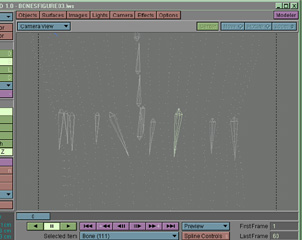
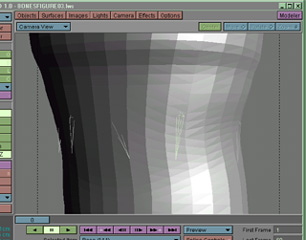
Eventually, I would see an expert animator rig a character for bones, and realize how backward my attempt had been. The larger part of my grief was probably due to using the default "falloff" setting, which leads to head bones being affected by heel bones.
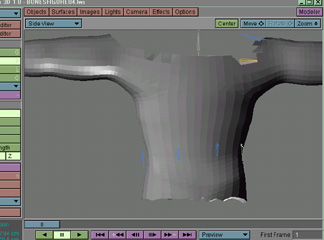
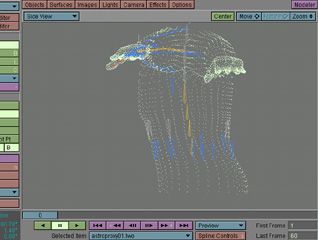
One approach that I still seem to find useful is cutting away polygons for "proxy" objects in order to be able to grab key bones, but without having to resort to a point mesh wireframe toggled in the Scene Editor.
The following MPEG-4 (33K) arm test doesn't belong in the portfolio, but it shows the technique with only the arm bonesed.
< BACK . . . . . . . . . . . . . . < HOME > . . . . . . . . . . . . . . NEXT >